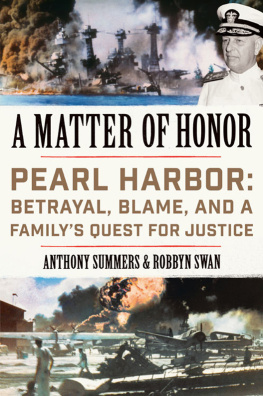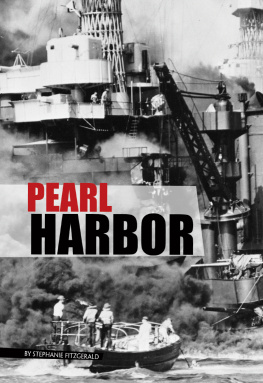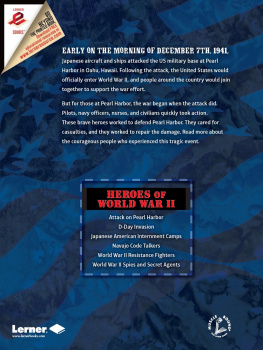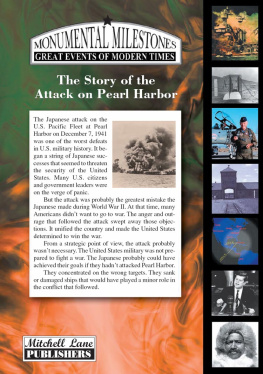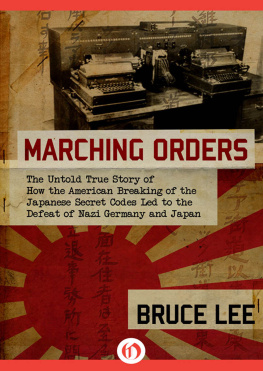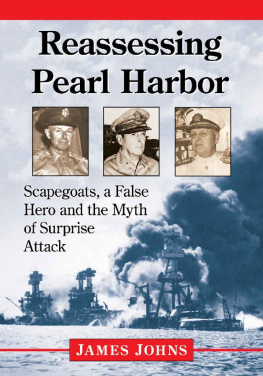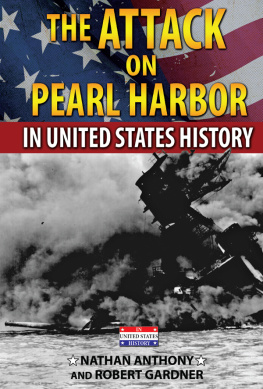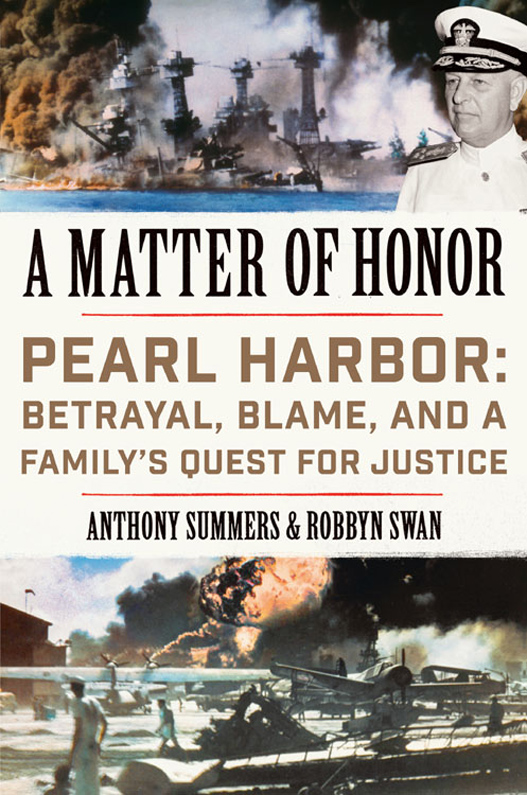Contents
Guide
Australia
HarperCollins Publishers Australia Pty. Ltd.
Level 13, 201 Elizabeth Street
Sydney, NSW 2000, Australia
www.harpercollins.com.au
Canada
HarperCollins Canada
2 Bloor Street East - 20th Floor
Toronto, ON M4W 1A8, Canada
www.harpercollins.ca
New Zealand
HarperCollins Publishers New Zealand
Unit D1, 63 Apollo Drive
Rosedale 0632
Auckland, New Zealand
www.harpercollins.co.nz
United Kingdom
HarperCollins Publishers Ltd.
1 London Bridge Street
London SE1 9GF, UK
www.harpercollins.co.uk
United States
HarperCollins Publishers Inc.
195 Broadway
New York, NY 10007
www.harpercollins.com
Looking for Madeleine
The Eleventh Day: The Full Story of 9/11
Sinatra: The Life
The Arrogance of Power: The Secret World of Richard Nixon
ALSO BY ANTHONY SUMMERS
Goddess: The Secret Lives of Marilyn Monroe
Official and Confidential: The Secret Life of J. Edgar Hoover
Honeytrap: The Secret Worlds of Stephen Ward (with Stephen Dorril)
Not in Your Lifetime: The Defining Book on the JFK Assassination
The File on the Tsar (with Tom Mangold)
A MATTER OF HONOR. Copyright 2016 by Anthony Summers and Robbyn Swan. All rights reserved under International and Pan-American Copyright Conventions. By payment of the required fees, you have been granted the nonexclusive, nontransferable right to access and read the text of this e-book on-screen. No part of this text may be reproduced, transmitted, downloaded, decompiled, reverse-engineered, or stored in or introduced into any information storage and retrieval system, in any form or by any means, whether electronic or mechanical, now known or hereafter invented, without the express written permission of HarperCollins e-books.
FIRST EDITION
ISBN 978-0-06-240551-7
EPub Edition NOVEMBER 2016 ISBN 9780062405531
16 17 18 19 20 RRD/DIX 10 9 8 7 6 5 4 3 2 1
For the seven members of our families who, in World War II, served in
the U.S. Army and Navy, and in the British Royal Air Force.
FOR AMERICANS IN modern times, two events resonate like none other: Pearl Harbor and 9/11. They resonate because of the enormous loss of life involved, and because the attacks took place on U.S. territory and were aimed at the heart of the homeland itself. Both events catapulted the United States into war. Pearl Harbor marked the start of a world war that would last four years and cost half a million Americans their lives.
Both events initiated a tsunami of official records, books, academic papers, films, andin the case of 9/11 especiallyseemingly inexhaustible discourse on the Internet. As when we were working on our book on 9/11, The Eleventh Day, we have plunged deeply into the factsand factoidsabout Japans strike on Pearl Harbor. This has included pulling at the multiple strands of conspiracy theory in which the story of the catastrophe has for so long been entangled. They center on the notion that President Roosevelt, or British Prime Minister Churchill, or members of their governments and staffs, had foreknowledge that Japan was going to strike Hawaii. Yet for cynical reasons, some have suggested, it was decided not to warn the commanders there.
None of the supposed evidence of treachery that we examined proved solid. We have reported on much of it, usually not in the text but in the Notes. (Should readers wish to ask us about a lead they may think we have not explored, they may contact us through our publisher.)
What we have found during our work is a tragedy replete with human error and lapsessome understandable, some inexcusablemany of them at a high level in Washington. There was a cover-up, a necessity at the time. But there was also blame, unjustly placed.
A.S., R.S.
September 2016
IN THE EVENINGS , when the old man was in his eighties, he liked to sit up playing solitaire. Sometimes, when he wanted company, his daughter-in-law would sit with him and they would talk a littleshe would mostly listenuntil he fell asleep. The old man had had no daughters, only sons, and they held each other in great affection.
On one such fall night in the 1960s, it was chilly in the clapboard ranch house in New England. The old man was sitting at his desk, bundled up in a heavy maroon robe, with a thick scarf around his neck. On his head, pulled down low, was the blue knitted sailors watch cap he liked to wear. For he had been a sailor, at heart always would be.
That night as he sat with his daughter-in-law, the man wanted to reminisce, to share memories and memorabilia. He pulled out a packet of papers tied together with a ribbon; they were faded and crumbling, some of them dating back to the nineteenth century: letters between his grandfather and his father, who had fought in the Civil War; letters from the two world wars; letters from the wife he had married fifty years earlier; and letters from his three sons.
Earlier, he had entrusted his daughter-in-law with other treasures. Now, as he gave her the letters, he admonished her to keep them safe. Then, settling back in his barrel-shaped chair and pulling out a deck of cards, he talked on. As she listened, the daughter-in-law looked past him, across the desk, at a painting.
It was a portrait of a man in his prime, a U.S. Navy officer in full-dress uniform, pristine white, with a high collar. On his chest, the white was broken only by the ribbon denoting his medals. In his lap, the officer held his gold-encrusted hat. On the shoulders, making broad shoulders seem broader, were the epaulets indicating his rank.
Four stars. For the officer in the portrait had once been one of the most senior, most distinguished admirals in the U.S. Navy.
Had been because, soon after it was painted, the portrait became an anachronism. Accused of dereliction of duty and errors of judgment, the Admiral had been relieved of his command and lost his four-star rank. In the eyes of millions, it was his personal failure that had led to the deaths of more than 2,400 men, and to the injuries of more than a thousand others. The Admiral had borne the lions share of the blame for one of the greatest military disasters in U.S. history.
Pearl Harbor.
After his fall, the Admiral had fought on, year after year, to convince the world that he was innocent of the allegations. There had been no fewer than nine investigations into the debacle that led to his disgrace. The famous and the less famous had testified, some reluctantly, as to whatthey claimedhad really happened. Books had been published. Americans had argued. Had others made the Admiral the scapegoat for their blunders? Had the Admiral been the victim of a grotesque official conspiracy, as even he surmised in his less restrained moments? Nothing had been resolved.
Two decades on, beneath the portrait of himself as he had once been, the old man sat talking into the night with his daughter-in-law. Time was running out for him, and he knew it. In the past, when anniversaries of Pearl Harbor came around, he had given press interviews. Eventually, however, he began turning reporters away. Please dont try to make me talk, he told one of them. Pearl Harbor is all in the history books. You dont want to see me. Im dead.
The truth of the matter, an intimate said, was that the Admiral still thought about Pearl Harbor every moment of the day. His mind was still sharp, his sense of humor intact. There was bitterness, though, behind his smiles. Bitterness over the injustice he believed had been done to him, bitterness toward one man in particular, a man he had thought was his friend.
Next page
